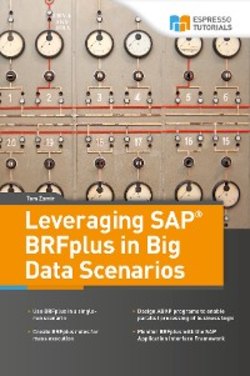Читать книгу Leveraging SAP BRFplus in Big Data Scenarios - Tom Zamir - Страница 11
На сайте Литреса книга снята с продажи.
Micro vs macro
ОглавлениеA business rule should attempt to provide a solution for a micro decision, rather than attempt to steer a business process on a macro level. The rule should be as concise as possible, with minimal input and output. To paraphrase, the relationship between a rule and an invoker should be like the relationship between a driver and a traffic light. The traffic light itself does not care where the driver is heading, and it does not pretend to tell him what his destination should be. It only cares about the fact that the driver has arrived at a specific intersection at a specific angle and time. The directions given to the driver are valid for this specific intersection, for this specific moment. Although the traffic light does not tell the driver which turn to take, it does help him with an important (micro) decision—whether to enter the intersection or not. Everyone agrees that not paying attention to the light signal is dangerous.
The motivation behind the first two rules of thumb above is to increase compactness, which in turn contributes to modularity, reusability, and maintainability. Also, in the case of big data, where you might have many invocations of the same business rules on a very large population, reducing the number of computational steps needed for the business logic involved, even by a small degree, can have a large noticeable effect.
